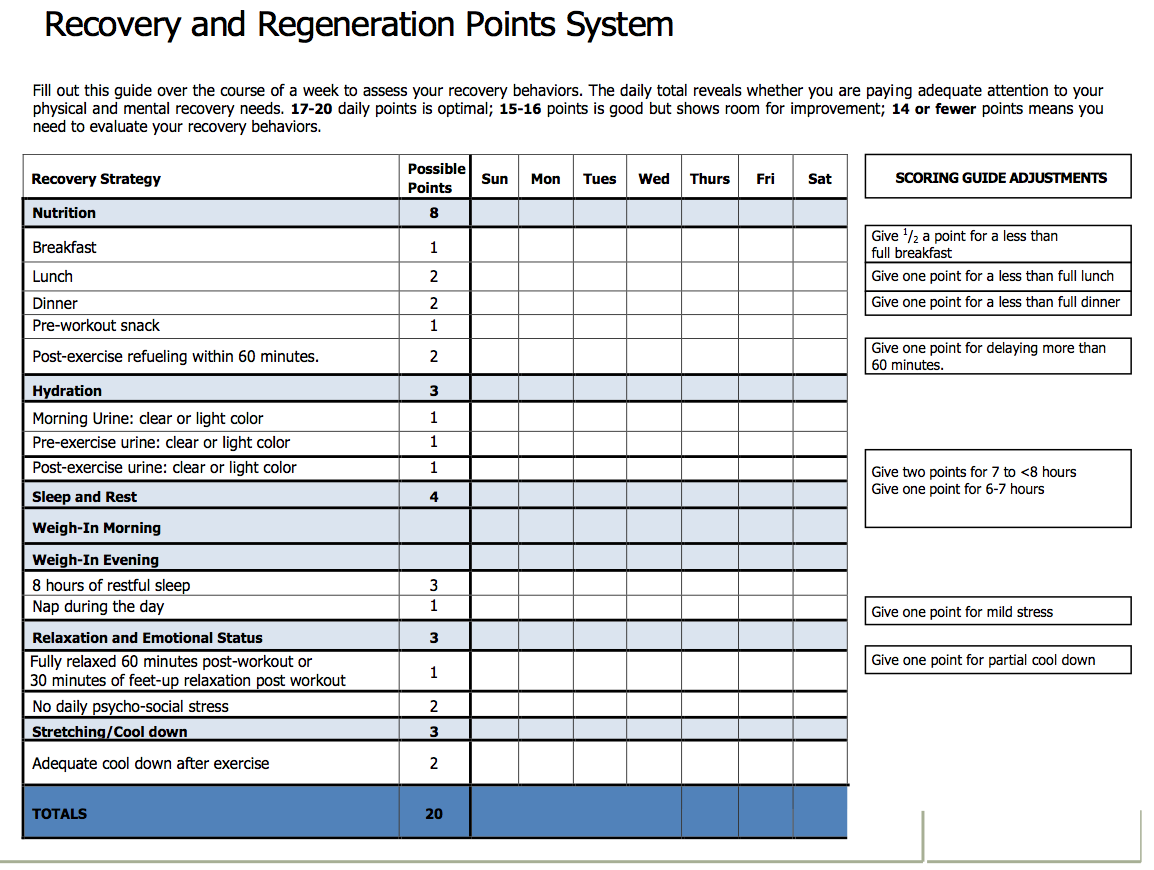Coaches: Prevent Injuries With the Recovery Management Tool
![]()
In this wonderful age of technology, we have many ways to track data. You can now instantly track sleep quality, heart rate, hydration and many other complicated variables. Many of these tools provide a wealth of information, but some can be a bit overkill.
As coaches, our first goal is to keep our athletes healthy. Yes, improving their performance is important—and it’s what we get paid to do. But an injured athlete cannot play, no matter how strong or fast we trained him or her to be. So, we need to sort the information available to us and identify the athletes who are most at risk for an injury before it happens.
Yes, workout tracking is great. But often what our athletes do outside the weight room makes a bigger impact on their health and durability. This includes their diet, how well they sleep and even the amount of time they spend relaxing.
With the help of professionals in the field, many books and some of my mentors, I have built a recovery tool adapted from “Train Smart: Avoid Overtraining Syndrome” that I use with athletes at St. Anselm’s Abbey School in Washington, D.C. It offers athletes a detailed, but simple tool for managing their physiological condition before and after practices and games.
Focusing on their individual criteria helps our athletes notice the little things, which, if ignored, can leave them injured on the bench or mentally burned out. The tool teaches accountability, allowing the athletes to learn what they need to do on their own time to perform at their best.
RELATED: 5 Stages of Injury Recovery
The sample Recovery Management template below includes a numerical point system. Athletes attain the maximum allotted points if they meet criteria listed in each category. Under each category, there are possible points in subcategories they are responsible for completing every day of the week. There is no passing or failing score. The goal is to reach 20 total points in every category each week.
Athletes can track their progress from week to week, and ideally correlate the results to their performance. Most important, collecting these kinds of quantitative data can convince your athletic director, coaches and parents that your program is helping the athletes stay healthy and succeed.

RECOMMENDED FOR YOU
MOST POPULAR
Coaches: Prevent Injuries With the Recovery Management Tool
![]()
In this wonderful age of technology, we have many ways to track data. You can now instantly track sleep quality, heart rate, hydration and many other complicated variables. Many of these tools provide a wealth of information, but some can be a bit overkill.
As coaches, our first goal is to keep our athletes healthy. Yes, improving their performance is important—and it’s what we get paid to do. But an injured athlete cannot play, no matter how strong or fast we trained him or her to be. So, we need to sort the information available to us and identify the athletes who are most at risk for an injury before it happens.
Yes, workout tracking is great. But often what our athletes do outside the weight room makes a bigger impact on their health and durability. This includes their diet, how well they sleep and even the amount of time they spend relaxing.
With the help of professionals in the field, many books and some of my mentors, I have built a recovery tool adapted from “Train Smart: Avoid Overtraining Syndrome” that I use with athletes at St. Anselm’s Abbey School in Washington, D.C. It offers athletes a detailed, but simple tool for managing their physiological condition before and after practices and games.
Focusing on their individual criteria helps our athletes notice the little things, which, if ignored, can leave them injured on the bench or mentally burned out. The tool teaches accountability, allowing the athletes to learn what they need to do on their own time to perform at their best.
RELATED: 5 Stages of Injury Recovery
The sample Recovery Management template below includes a numerical point system. Athletes attain the maximum allotted points if they meet criteria listed in each category. Under each category, there are possible points in subcategories they are responsible for completing every day of the week. There is no passing or failing score. The goal is to reach 20 total points in every category each week.
Athletes can track their progress from week to week, and ideally correlate the results to their performance. Most important, collecting these kinds of quantitative data can convince your athletic director, coaches and parents that your program is helping the athletes stay healthy and succeed.











